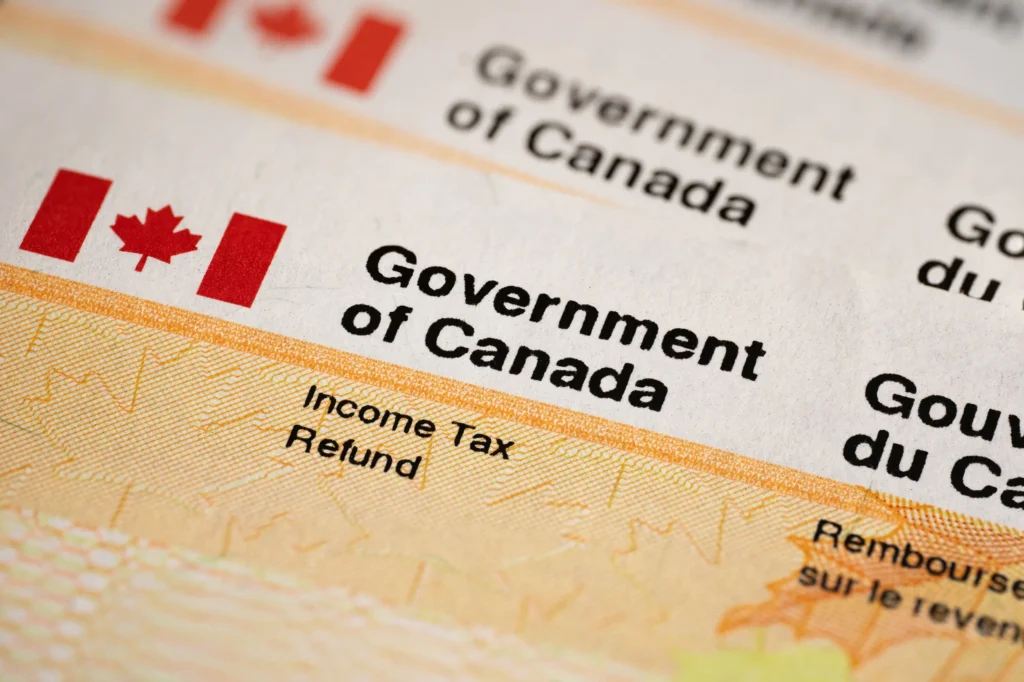When you establish non-residency for Canadian tax purposes, the tax consequences extend far beyond simple reporting obligations. The Canada Revenue Agency applies a deemed disposition rule to your worldwide assets. This legal fiction treats you as having disposed of property at fair market value immediately before departure, regardless of whether any actual transaction occurred. For high-net-worth individuals, this statutory mechanism can trigger substantial tax liabilities that require sophisticated planning.
Understanding the Deemed Disposition Rule
The deemed-disposition provisions under the Income Tax Act operate on the principle that Canada has the right to tax capital appreciation that accrued during your period of Canadian residency. Upon ceasing to be a resident, subsection 128.1(4) of the Act deems you to have disposed of specific property at fair market value and to have immediately reacquired it at the same value.
This legal mechanism applies automatically when you sever residential ties with Canada. Your investment portfolio, cryptocurrency holdings, vacation properties (excluding your principal residence), private corporation shares, and valuable personal property all fall within the scope of this provision. The departure tax regime in Canada ensures that the government captures its share of unrealized gains before you leave the country’s tax jurisdiction.
The amount of tax owed depends on several factors: your marginal tax rate at the time of departure, the total capital gains realized through deemed-disposition, and your province of residence. Each taxpayer’s tax liability must be assessed based on their unique circumstances and the makeup of their asset holdings, rather than using a flat rate or simplified calculation.
Practical Application of Deemed Disposition Rules
To illustrate how these provisions operate in practice, consider a technology entrepreneur relocating from Toronto to Portugal. The individual’s asset base includes:
- Publicly traded securities valued at $2 million (adjusted cost base: $800,000)
- A recreational property in Whistler worth $1.5 million (acquisition cost: $900,000)
- Cryptocurrency holdings valued at $500,000 (cost base: $200,000)
The CRA will compute capital gains on each class of property as follows:
Investment portfolio: $2,000,000 – $800,000 = $1,200,000 capital gain Whistler property: $1,500,000 – $900,000 = $600,000 capital gain Cryptocurrency: $500,000 – $200,000 = $300,000 capital gain
Under current 2025 legislation, 50% of capital gains up to $250,000 are included in taxable income, while the inclusion rate increases to 66.67% for gains exceeding that threshold. With aggregate capital gains of $2,100,000, this taxpayer faces a material tax liability that must be addressed before establishing non-residency.
Where the aggregate fair market value of all property owned at departure exceeds $25,000, the taxpayer must file Form T1161, List of Properties by an Emigrant of Canada, providing detailed particulars of each asset subject to the deemed disposition rules (rrsrp).
Calculating Departure Tax Liability
The statutory formula for determining capital gains follows established principles:
Proceeds of Disposition (Fair Market Value) – Adjusted Cost Base – Outlays and Expenses = Capital Gain
The adjusted cost base encompasses not only the original acquisition price but also any capital expenditures that enhanced the property’s value, including legal fees, commissions, and improvements.
Business owners face additional complexity. Consider an individual holding shares in a Calgary-based manufacturing corporation now valued at $8 million, with an adjusted cost base of $500,000. The deemed-disposition generates a $7.5 million capital gain.
However, qualifying shares may be eligible for the Lifetime Capital Gains Exemption under section 110.6 of the Income Tax Act. For 2025, this exemption permits up to $1,016,836 of gains on qualified small business corporation shares to be sheltered from taxation, materially reducing the immediate tax burden.
It is imperative to obtain professionally prepared fair market value appraisals for all assets as of the date of departure. These valuations serve dual purposes: they establish the cost base for future dispositions and provide documentation necessary to claim foreign tax credits under applicable tax treaties, thereby preventing double taxation when the property is eventually sold.
Statutory Exemptions from Deemed Disposition
The Income Tax Act provides specific carve-outs from the deemed-disposition regime. Understanding these exemptions is essential for tax planning and can preserve hundreds of thousands of dollars in tax liability.
The principal residence exemption under section 54 of the Act shields your primary dwelling from capital gains taxation, provided you have correctly designated the property throughout your period of ownership. When leaving Canada, the capital gains rules for a primary residence can reduce or eliminate departure tax Canada for primary residence, though strict designation requirements must be met.
Canadian real property receives preferential treatment under subsection 128.1(4)(b). Rental properties, vacant land, resource properties, and Canadian business properties operated through a permanent establishment do not trigger a deemed-disposition upon departure. Tax is deferred until the actual disposition, creating planning opportunities for individuals maintaining Canadian real estate investments post-departure.
Registered plans—including RRSPs, RRIFs, TFSAs, RESPs, and RDSPs—fall outside the deemed-disposition provisions entirely under paragraph 128.1(4)(b)(iv). These accounts maintain their tax-deferred or tax-exempt status after you become a non-resident, though different withholding rules apply to withdrawals.
Regarding TFSAs specifically, while you may maintain the account and continue earning investment income tax-free, subsection 146.2(2) prohibits contributions by non-residents. Any contributions made while non-resident attract a penalty tax of 1% per month under section 207.02 until withdrawal.
Personal-use property valued below $10,000—household effects, vehicles, and furniture—is exempt under the personal-use property rules in section 46 of the Act.
Short-Term Resident Exception
Paragraph 128.1(4)(b)(iv) provides relief for individuals who have been Canadian residents for less than 60 months within the preceding 10-year period. Property owned before establishing Canadian residency, or property acquired by inheritance during residency, generally remains exempt from deemed-disposition. This provision offers substantial tax savings for recent immigrants departing Canada.
Tax Planning Strategies to Minimize Liability
Sophisticated tax planning can materially reduce departure tax exposure. The following strategies have proven effective for high-net-worth individuals:
Strategic timing of departure: Capital losses can be applied against capital gains under section 3 of the Act. Disposing of underperforming investments before departure creates losses that offset deemed-disposition gains. Additionally, departing early in the taxation year reduces the portion of annual income taxed at Canadian rates, potentially lowering your marginal rate for the final year.
Maximizing registered account contributions: Where contribution room exists, consider making in-kind contributions of appreciated non-registered investments to an RRSP or TFSA before departure under subsection 146(16). This crystallizes the gain but transfers the asset to a tax-sheltered environment. Strict adherence to contribution limits under sections 146 and 146.2 is required to avoid penalty taxes.
Spousal rollovers and staggered departures: Subsection 73(1.01) permits tax-deferred transfers of capital property to a Canadian-resident spouse or common-law partner. Some families structure departures so one spouse exits first while the other remains temporarily, facilitating income splitting and flexible planning. Alternatively, property can be transferred to the Canadian-resident spouse, deferring tax until their eventual disposition.
Providing security for deferred payment: Rather than satisfying the entire tax liability immediately, taxpayers can post acceptable security with the CRA under subsection 220(4.5). Acceptable forms include letters of credit, government bonds, or guarantees from recognized financial institutions.
In one case, investment professionals from Vancouver, facing a deemed-disposition liability of $450,000, provided a bank guarantee and negotiated a structured payment arrangement aligned with liquidity from their business sale.
Read Also: Leaving Canada? In-Depth Guide to Canadian Tax Residency Rules by Immigration Lawyers
Deferral Elections Under Section 220
Where deemed disposition tax liability is substantial and immediate liquidity is constrained, subsection 220(4.5) permits an election to defer payment until actual deemed-disposition of property. This mechanism provides relief for individuals with significant unrealized gains but limited cash reserves.
The deferral procedure requires:
- Filing Form T1244, Election to Defer Payment of Income Tax, Under Subsection 159(4.1) and (5) by Emigrants from Canada
- Posting acceptable security where federal tax exceeds $16,500 (or $13,777.50 for former Quebec residents) under subsection 220(4.5)
- Acceptable security includes irrevocable letters of credit or registered security interests in real or personal property
A significant advantage: subsection 159(7) provides that no interest accrues on the deferred amount, provided adequate security is furnished. This permits deferral of potentially millions in tax liability without interest charges, preserving capital for deployment in your new jurisdiction.
This represents a deferral, not an elimination, of tax liability. Upon actual deemed disposition of property, the outstanding tax must be remitted to the CRA within 90 days pursuant to subsection 159(5).
Common Legal and Procedural Errors
Departing taxpayers frequently commit errors that result in penalties, interest charges, or protracted disputes with the CRA:
Failure to file a departure return: Subsection 128.1(4) requires filing a final return reporting the deemed-disposition. You must indicate your exact departure date on page 1 of Form T1 General under “Residence Information.” Non-compliance can result in penalties under subsection 162(1) and complications establishing your non-resident status.
Neglecting financial institution notification: Subsection 212(1) requires Canadian financial institutions to withhold non-resident tax on certain income payments. You have a legal obligation to notify your institutions of your change in residency status. Institutions will apply the prescribed withholding rate (typically 25%, subject to treaty reductions) to interest and certain investment income.
Ignoring provincial health care termination: Provincial health insurance terminates based on your departure date. This timing should be coordinated with your tax planning to ensure continuous coverage during your transition.
Overlooking tax treaty provisions: Canada maintains comprehensive tax treaties with numerous countries under section 2 of the Income Tax Conventions Interpretation Act. Treaty provisions may provide double taxation relief, reduce withholding rates on Canadian-source income, or permit a step-up in cost basis, allowing your destination country to recognize the deemed-disposition value as the acquisition cost.
Disregarding foreign exchange effects: Where your destination country uses a different currency, exchange rate fluctuations affect the actual economic cost of your tax liability. This should be factored into your liquidity planning.
Making post-departure TFSA contributions: The annual TFSA contribution limit under subsection 207.01(1) is not prorated in the emigration year. However, as a non-resident, you cannot make contributions. Contributing after departure triggers penalty tax under section 207.02.
Special Considerations for Corporate Shareholders
Private corporation shareholders face heightened complexity under the deemed-disposition rules. Subsection 128.1(4) requires determining the fair market value of shares, necessitating professional business valuation in accordance with accepted valuation principles.
Consider a Montreal-based software company owner whose shares, originally acquired for $100,000, are now valued at $12 million due to the expansion of their contract portfolio and the development of intellectual property. The deemed disposition results in a $11.9 million capital gain.
Corporate shareholders must analyze:
- Eligibility for the capital gains exemption under section 110.6(1) for qualified small business corporation shares
- Tax planning implications of maintaining director status post-departure
- How departure affects corporate residency under subsection 250(4) and associated taxation
- Pre-departure restructuring options, including estate freezes under section 86 or family trust arrangements under subsection 75(2), which lock in current values and attribute future growth to Canadian-resident family members
Reversing Deemed Dispositions Under Subsection 128.1(2)
In limited circumstances, the Act permits unwinding a deemed-disposition. Where you re-establish Canadian residency and continue to own the exact property that was subject to departure tax, subsection 128.1(2) allows an election to reverse the disposition.
To exercise this election, submit a written request to the CRA on or before your filing deadline for the return year. The CRA will permit reduction or cancellation of the previously reported gain up to the amount taxed initially. Where you elected deferral under Form T1244, the CRA may release posted security rather than issuing a cash refund.
This relief is only available where you retained ownership throughout your non-resident period. If the property was disposed of while abroad, the deemed-disposition cannot be reversed.
Post-Departure Reporting Obligations
Your Canadian tax obligations do not terminate entirely upon departure. You remain subject to Part XIII withholding tax on Canadian-source income under section 212, including:
- Rental income from Canadian real property under paragraph 212(1)(d)
- Dividends from Canadian corporations under paragraph 212(1)(c)
- Capital gains on disposition of taxable Canadian property under subsection 116(5)
- RRSP withdrawals, subject to withholding under subsection 153(1)
Where you hold specified foreign property exceeding CAD $100,000, Form T1135, Foreign Income Verification Statement, may be required depending on your residency determination.
You may maintain Canadian bank accounts to hold Canadian currency, remit Canadian expenses (such as property tax and insurance), and receive Canadian-source income. While unpaid departure tax does not legally prevent your physical departure from Canada, subsection 224(1) permits the CRA to pursue collection through international agreements with certain countries, civil judgments, or registered security interests against Canadian property.
Engaging Professional Advisors
Given the statutory complexity and material financial consequences, retaining qualified professionals is prudent:
- A tax accountant with expertise in non-resident taxation under Part XIII and Part I of the Act
- An immigration lawyer to determine residency status under common law principles
- A financial advisor to implement pre-departure restructuring
- A business valuator accredited under recognized professional standards if you hold private company shares
Professional fees are substantially less than the cost of errors, penalties, or unnecessary tax payments. For most high-net-worth individuals, proper planning yields five- or six-figure tax savings.
Developing a Comprehensive Exit Strategy
Deemed disposition planning should commence 12-18 months before your intended departure date to allow adequate time for:
- Conducting a comprehensive inventory of all assets subject to deemed-disposition
- Obtaining independent fair market value appraisals for complex assets
- Implementing restructuring strategies to minimize taxable gains
- Analyzing applicable tax treaty provisions with your destination jurisdiction
- Arranging acceptable security for any deferred departure tax under subsection 220(4.5)
- Establishing systems for ongoing Canadian-source income reporting
- Preparing Form T1161 where aggregate asset value exceeds $25,000
- Providing formal notice to all financial institutions regarding a change in residency status
For comprehensive guidance on the complete exit process, including immigration law considerations, consult our detailed guide to exiting Canada. For individuals in preliminary planning stages, our overview of leaving Canada permanently addresses the full range of legal and practical considerations.
Conclusion
The deemed disposition provisions represent one of the most consequential tax events for individuals severing Canadian residency. For high-net-worth taxpayers with substantial investment portfolios or business interests, departure tax can reach into the hundreds of thousands or millions of dollars.
However, the statutory framework provides numerous planning opportunities for those who approach their departure strategically. Early planning, professional guidance, and informed decision-making regarding timing and asset structure can substantially reduce your tax burden while ensuring full compliance with the Income Tax Act.
The deemed-disposition mechanism is not punitive—it reflects Parliament’s considered policy that Canada should tax capital appreciation arising during the period of Canadian residency. By treating exit tax as a standard component of your departure strategy rather than an impediment, you can terminate your Canadian residency on favorable terms while satisfying all legal obligations.
Need more information? read about complete guide about Severing Ties with Canada Legally
Require assistance with deemed-disposition planning? Harvey Law Corporation possesses extensive experience advising high-net-worth Canadians on tax-efficient exit strategies.
Contact our office to discuss your circumstances and develop a comprehensive departure plan tailored to your specific situation.




